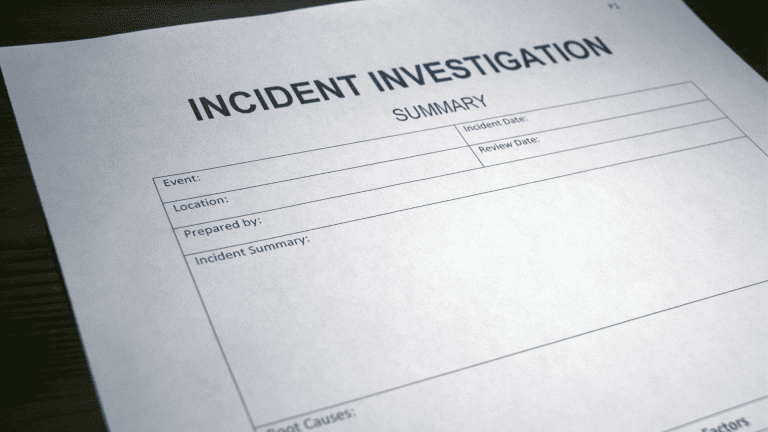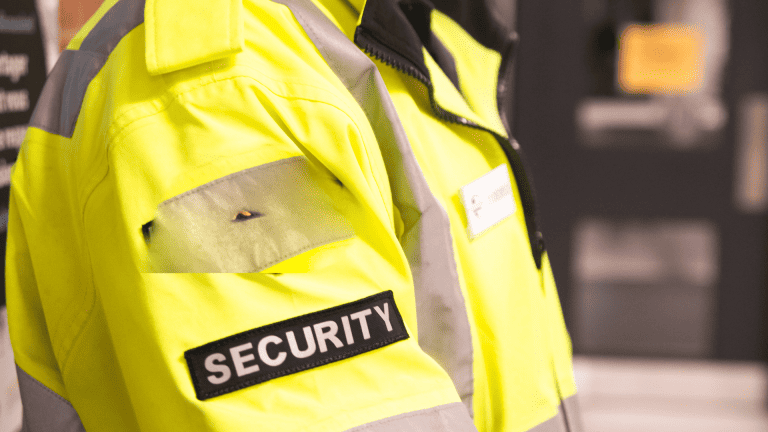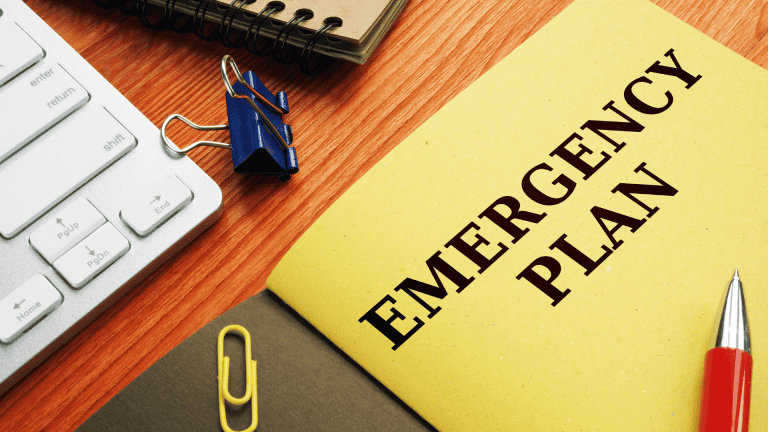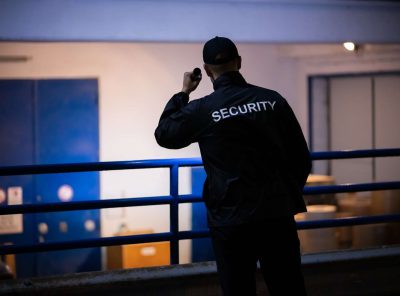Workplace Safety For Security Personnel

Introduction
In Canada's security world, let's talk about something vital: workplace safety for security guards.
This article is all about understanding why it matters so much.
Think of security guards as the unsung heroes – they're not just there to stop bad guys; they play a massive role in keeping everyone safe.
From keeping an eye on security cameras to walking the rounds, their job is diverse and, well, pretty tough.
This post breaks down why workplace safety is a big deal for these everyday heroes in Canada.
Picture security guards as the guardians of safety. They're not just there to stop trouble; they actively work to prevent it. Their watchful eyes and quick actions make a real difference.
Workplace safety isn't just a rulebook for them; it's about caring for the people they protect and making sure they stay safe too.
In a job where being quick on your feet is crucial, a safe workplace is like a superhero's secret lair – the foundation for all the cool stuff they do.
This article will help you see why workplace safety is a big deal for these security superheroes in Canada.
The Security Guard's Role in Workplace Safety

Security guards shoulder a crucial responsibility in maintaining a safe workplace through a variety of tasks.
Regular patrols are a fundamental duty, as their visible presence not only deters potential threats but also allows them to identify and address emerging safety concerns.
By actively monitoring surveillance systems, security guards can swiftly detect suspicious activities, contributing to the prevention of incidents and ensuring a quick response when needed.
Additionally, implementing access control measures, such as verifying authorized entry, adds an extra layer of protection.
Their diligence in addressing safety hazards, coupled with the ability to respond swiftly to emergencies, positions security guards as frontline guardians, actively contributing to the overall safety and security of the workplace.
The actions of security guards contribute significantly to the overall safety and security of a workplace by forming a proactive and responsive defence mechanism.
Through their regular patrols and visible presence, they create a deterrent effect that discourages potential threats.
The ability to identify and address emerging safety concerns during these patrols ensures a preemptive approach, mitigating risks before they escalate.
Actively monitoring surveillance systems allows security guards to swiftly detect suspicious activities, preventing incidents and facilitating a rapid response when necessary.
Their implementation of access control measures further fortifies the workplace, ensuring that only authorized individuals have entry and reducing the likelihood of unauthorized access or security breaches.
In essence, the diligence and swift responses of security guards not only protect against immediate threats but contribute to fostering a culture of continuous safety and security within the workplace.
Canadian Workplace Safety Regulations

In Canada, workplace safety is governed by federal, provincial, and territorial regulations, with each jurisdiction having its own set of laws.
At the federal level, the Canada Labour Code outlines general safety standards applicable to federally regulated industries, while individual provinces and territories administer safety regulations for businesses under their jurisdiction.
Key aspects of workplace safety regulations in Canada include hazard assessments, training requirements, emergency preparedness, and the provision of personal protective equipment.
For security guards specifically, workplace safety regulations play a crucial role in ensuring their well-being and that of others.
Security guards are often exposed to various risks, including physical confrontations and potential harm during emergencies. Therefore, compliance with relevant safety regulations is essential.
This involves comprehensive training programs on conflict resolution, emergency response, and the proper use of security equipment.
Employers must also conduct regular risk assessments to identify and mitigate potential hazards, providing security guards with the necessary tools and support to perform their duties safely and effectively.
Adherence to both federal and provincial/territorial regulations ensures a unified and consistent approach to workplace safety for security personnel across Canada.
Common Workplace Hazards

Security guards encounter a range of workplace hazards that require keen attention.
Slips, trips, and falls represent a prevalent risk, particularly during patrols where mobility is constant.
Uneven surfaces, wet floors, or poorly illuminated areas can lead to injuries, impacting both the guard's well-being and their ability to perform essential duties.
Another significant hazard is the potential for violence, inherent in the confrontational nature of the security profession.
Interactions with individuals involved in criminal activities or contentious situations place security professionals at the frontline of potential harm.
The risks associated with common workplace hazards for security guards extend beyond the immediate physical consequences.
In the case of slips, trips, and falls, injuries can result in prolonged recovery times, affecting a security professional's ability to execute their duties efficiently.
Beyond the physical implications, the potential for violence poses emotional and psychological risks, as security guards may experience heightened stress, anxiety, or trauma from confrontational encounters.
These hazards not only jeopardize the well-being of security professionals but also compromise the overall effectiveness of security operations.
Addressing these risks through comprehensive training, safety protocols, and fostering a supportive work environment becomes paramount in ensuring the resilience and effectiveness of security personnel in their demanding roles.
Personal Protective Equipment (PPE)

The utilization of Personal Protective Equipment (PPE) is of paramount importance for security guards, serving as a critical line of defence against various workplace hazards.
PPE not only shields security professionals from potential physical injuries but also enhances their overall safety while executing their duties.
In situations where security guards may encounter risks such as confrontations, unpredictable incidents, or environmental hazards, the appropriate PPE becomes a crucial element in safeguarding their well-being.
Various types of PPE are employed to address specific risks.
This can include but is not limited to, stab-resistant vests, helmets, safety glasses, and gloves. Stab-resistant vests, for instance, are designed to protect against sharp objects, a particular concern for security personnel dealing with potential violence. Helmets offer head protection, and safety glasses safeguard the eyes from various hazards.
Equally vital as having the right PPE is understanding its proper usage and maintenance.
Security guards should be trained on the correct procedures for donning, doffing, and adjusting PPE to ensure its optimal effectiveness. Regular inspections and maintenance routines should be implemented to guarantee that PPE remains in good condition.
Additionally, security guards should be aware of the limitations of their PPE and know when replacements are necessary to maintain a consistent level of protection.
This comprehensive approach to PPE ensures not only the safety of security guards but also the effectiveness of these crucial protective measures in the security industry.
Emergency Preparedness

Being prepared for emergencies is of utmost significance in the realm of security, as it lays the foundation for a swift and effective response to unforeseen situations.
A proactive approach to emergency preparedness ensures that security guards are equipped with the knowledge, skills, and resources necessary to navigate diverse and potentially high-risk scenarios.
This preparedness not only enhances the safety of individuals within the premises but also minimizes the potential impact of emergencies on property and assets.
Security guards play a pivotal role in responding to various emergencies, acting as the first line of defence against threats such as fires, medical incidents, and security breaches.
In the event of a fire, their role may involve initiating evacuation procedures, ensuring everyone is accounted for, and coordinating with emergency services.
For medical incidents, security guards may provide initial first aid while awaiting professional medical assistance.
In cases of security breaches, their quick and decisive actions can mitigate potential harm, secure the area, and collaborate with law enforcement.
The adaptability and preparedness of security guards make them indispensable in the multifaceted landscape of emergency response.
Creating effective emergency response plans is essential for security guards and the overall safety of a facility.
Plans should be comprehensive, covering various potential scenarios, and tailored to the specific needs and layout of the location.
Regular drills and training sessions should be conducted to familiarize security personnel with the protocols outlined in the emergency response plan.
Clear communication strategies, designated assembly points, and coordination with external emergency services should be integral components.
Additionally, the plan should be periodically reviewed and updated to reflect changes in the environment, personnel, or potential risks.
A well-crafted and regularly rehearsed emergency response plan ensures that security guards are not only prepared but also capable of executing efficient responses to safeguard lives and property.
Communication and Reporting

Effective communication establishes a cohesive and coordinated security team, ensuring that information flows seamlessly among members.
Whether during routine patrols or responding to incidents, the ability to convey critical details, share observations, and coordinate actions in real-time is essential.
Clear communication not only enhances the overall efficiency of security operations but also fosters a sense of unity and preparedness within the team.
Security guards operate within a structured framework of protocols for reporting safety concerns and incidents.
These protocols streamline the reporting process, ensuring that relevant information reaches the appropriate channels promptly. Reporting safety concerns, potential hazards, or minor or critical incidents is integral to maintaining a secure environment.
Protocols often include detailed documentation, identification of key details, and adherence to a specific chain of command.
By following these established procedures, security guards contribute to a comprehensive understanding of the security landscape, enabling timely and targeted responses to emerging issues.
Effective reporting mechanisms are the linchpin in creating a safer workplace for security guards and all occupants.
When security personnel diligently report safety concerns and incidents, it enables prompt intervention and resolution.
This proactive approach minimizes the potential impact of emerging issues, preventing them from escalating into more significant threats.
Additionally, a robust reporting system contributes to a culture of continuous improvement, as trends and patterns in safety concerns can be identified and addressed systematically.
Ultimately, effective reporting enhances the collective vigilance of security guards, reinforcing the overall safety infrastructure of the workplace.
Training and Certification

Security guards undergo rigorous training to meet the specific requirements related to workplace safety.
This training encompasses a diverse range of topics, including emergency response protocols, hazard identification, and conflict resolution techniques.
Security personnel are educated on the proper usage of safety equipment and are familiar with the regulatory framework governing workplace safety.
Additionally, they receive specialized instruction on recognizing and addressing potential security threats, creating a well-rounded skill set that prepares them for the challenges of maintaining a safe work environment.
The benefits of ongoing safety training and certification for security guards are multifaceted.
Continuous training ensures that security personnel stay abreast of the latest safety protocols, technological advancements, and regulatory updates, thereby maintaining a high level of competency.
Regular certification processes serve as a validation of their proficiency and commitment to upholding safety standards.
Beyond regulatory compliance, ongoing training enhances the adaptability of security guards in responding to evolving security landscapes.
It fosters a culture of continuous improvement, where security professionals are equipped with the knowledge and skills necessary to navigate dynamic challenges and contribute proactively to the overall safety and security of the workplace.
Mental Health and Well-Being

Recognizing the importance of mental health is paramount in security, where professionals navigate high-stress environments and potentially challenging situations regularly.
The mental well-being of security guards directly influences their ability to make sound decisions, maintain focus, and effectively respond to security threats.
Acknowledging and addressing the mental health of security professionals is not just a matter of personal welfare but is integral to sustaining a resilient and effective security workforce.
In the demanding profession of security, implementing effective strategies for managing stress and maintaining well-being is crucial.
Security guards can benefit from practices such as regular physical exercise, mindfulness techniques, and establishing a healthy work-life balance.
Employers can contribute by fostering a supportive work environment, providing access to counselling services, and encouraging open communication about mental health challenges.
Additionally, rotating shifts, offering breaks, and organizing team-building activities can mitigate the toll of stress on mental health.
By proactively addressing the mental well-being of security professionals, both individuals and the overall security team can thrive in a challenging and dynamic work environment.
Case Studies
In examining real-life case studies, instances abound where security guards have played pivotal roles in ensuring workplace safety.
One notable example involves a security professional who, during a routine patrol, identified a potential fire hazard in the form of faulty electrical wiring.
By promptly reporting the issue and coordinating with the maintenance team, a potential fire threat was averted, safeguarding the entire workplace from a potentially catastrophic incident.
Another case involves a security guard's keen observation during a late-night shift, leading to the apprehension of an unauthorized individual attempting a break-in.
These cases underscore the proactive role security guards play in identifying and mitigating potential risks.
The actions and decisions of security guards in these case studies made a substantial difference in workplace safety.
In the first instance, the timely identification and reporting of a fire hazard not only prevented immediate danger but also initiated corrective measures to address broader safety concerns.
In the second case, the apprehension of an unauthorized individual demonstrated the deterrent effect of security measures, ensuring the safety and security of the premises.
These examples highlight the critical impact of security professionals' vigilance, decisiveness, and commitment to workplace safety, reinforcing the integral role they play in maintaining secure environments.
Conclusion
This article underscores the paramount importance of workplace safety for security guards in Canada, portraying them as unsung heroes responsible for maintaining a secure environment.
It emphasizes the multifaceted responsibilities security guards shoulder, including regular patrols, surveillance, and addressing safety concerns. Their proactive efforts not only deter potential threats but also contribute significantly to the overall safety and security of the workplace.
The post highlights common workplace hazards, the crucial role of personal protective equipment (PPE), emergency preparedness, effective communication, and ongoing training.
In conclusion, this article reiterates the critical role security guards play in workplace safety and encourages professionals in the field to prioritize safety and continuous learning throughout their careers.
It emphasizes that a safe workplace is not just a set of rules but a foundation for security professionals to carry out their diverse and challenging responsibilities effectively.
By fostering a culture of vigilance, continuous improvement, and adaptability, security guards can thrive in their demanding roles, ensuring the safety of themselves and those they protect in the dynamic landscape of security in Canada.
Take the time to invest in comprehensive training programs, stay updated on the latest industry developments, and continuously refine your skills.
Safety is not just a set of guidelines but a foundation for the impactful and demanding work you undertake daily.
Embracing a mindset of continuous learning not only enhances your professional expertise but also positions you to adapt and excel in the ever-evolving landscape of security.
Your dedication to safety and ongoing education not only elevates your capabilities but collectively contributes to the overall resilience and effectiveness of our essential profession.
Stay vigilant, stay informed, and continue to be the unwavering guardians our communities rely on.
Additional Resources
For an in-depth exploration of workplace safety in Canada, particularly tailored to security guards, a wealth of resources can be accessed through government websites, accredited training programs, and industry organizations.
The Canadian Centre for Occupational Health and Safety (CCOHS) serves as a comprehensive source for national guidelines.
Provincial and territorial regulatory bodies, responsible for security licensing and training, offer valuable insights into region-specific regulations.
Organizations such as the Canadian Security Association (CANASA) and Workplace Safety and Prevention Services (WSPS) provide industry-specific guidance and training programs.
Furthermore, articles like “8 Tips for Keeping Security Guards Safe” offer practical advice for security professionals.
These resources collectively contribute to fostering a safe and secure work environment for security guards across Canada.
Last Updated on Jul 5, 2024








